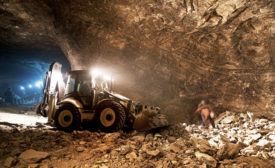News
Brace yourself: Snow, freezing rain predicted for South
Residents urged to stock up, then stay indoors
January 6, 2017
US mining deaths at an all-time low
25 miners died in work-related accidents last year
January 6, 2017
Never miss the latest news and trends driving the safety industry
eNewsletter | Website | eMagazine
JOIN TODAYCopyright ©2024. All Rights Reserved BNP Media.
Design, CMS, Hosting & Web Development :: ePublishing







